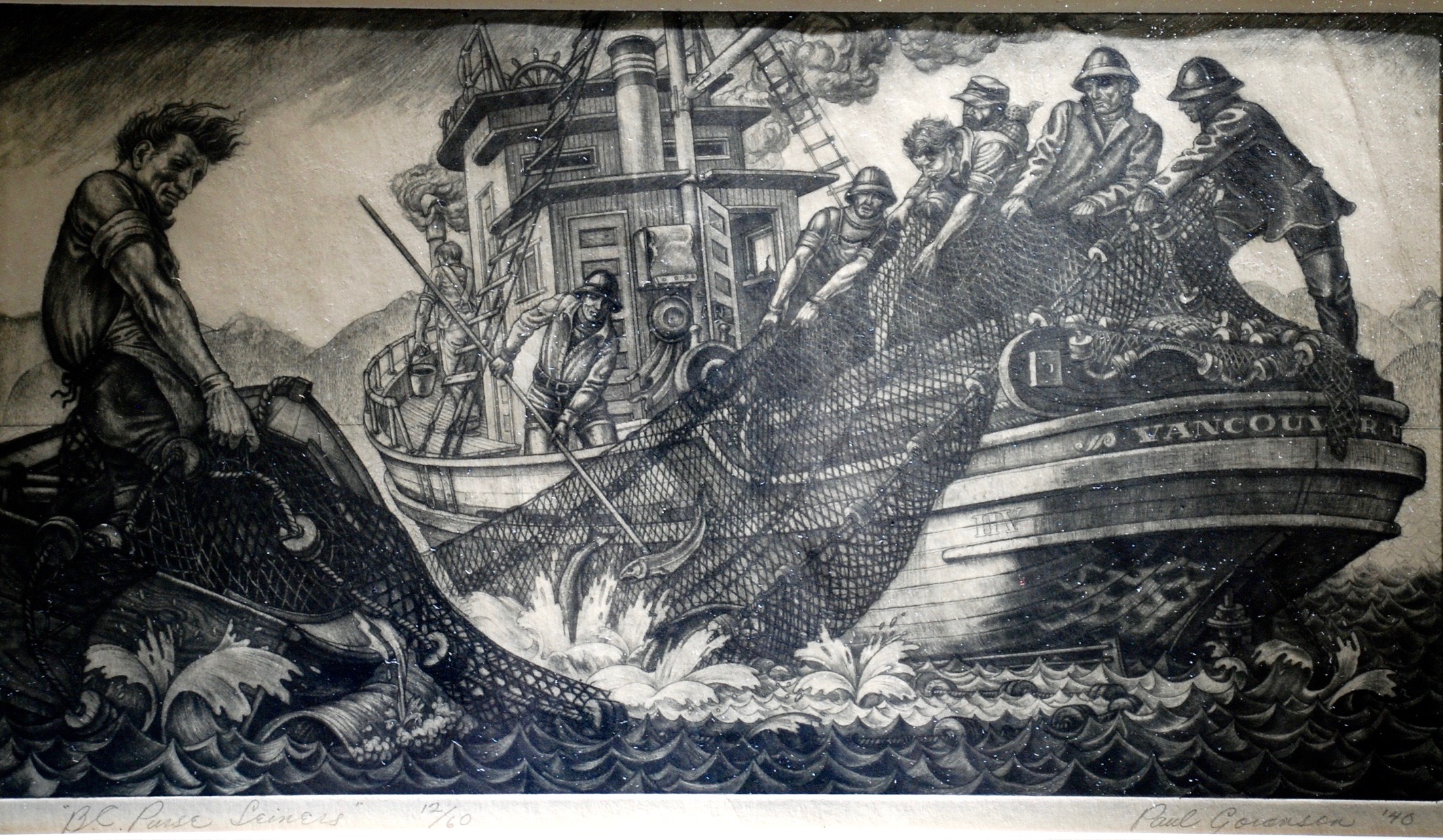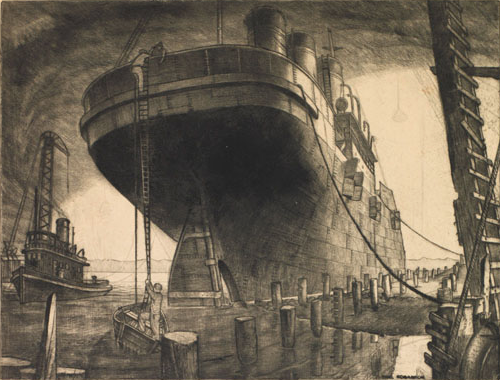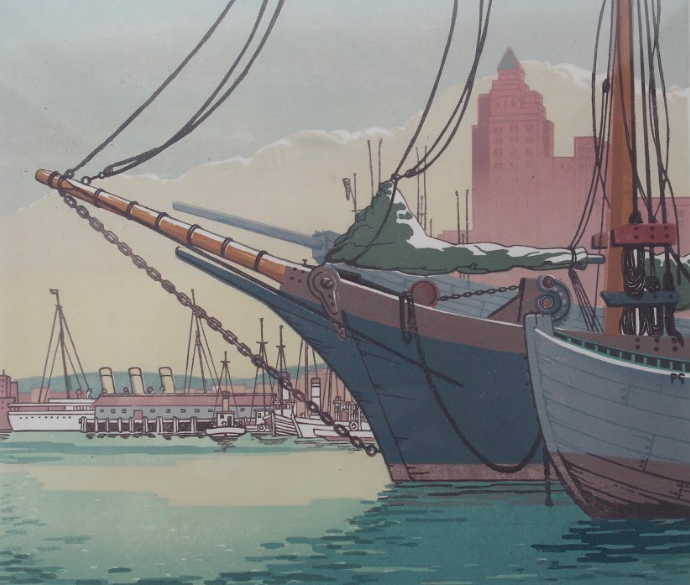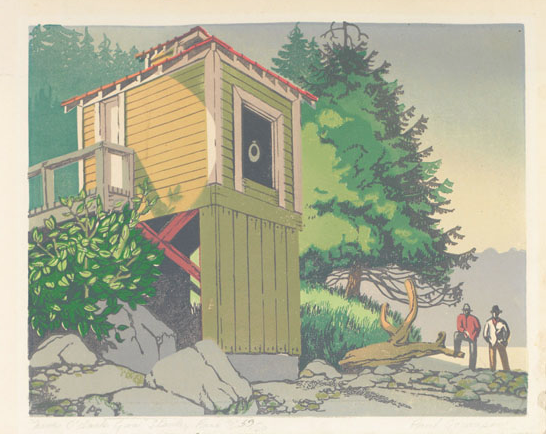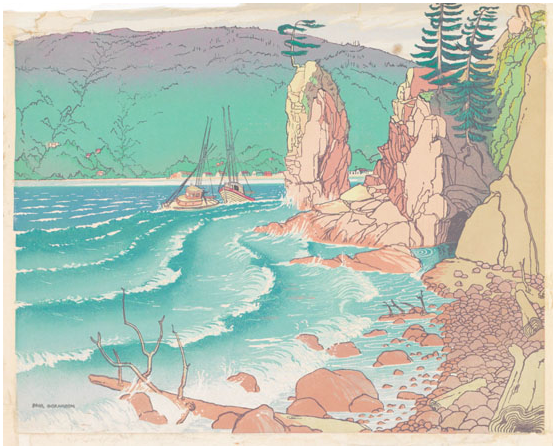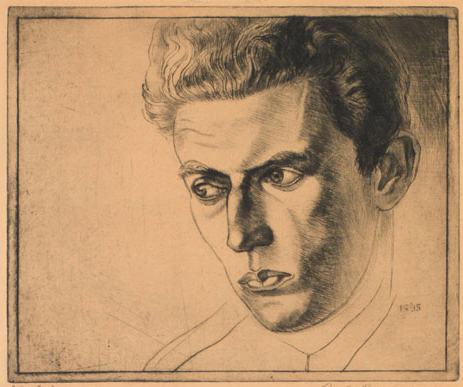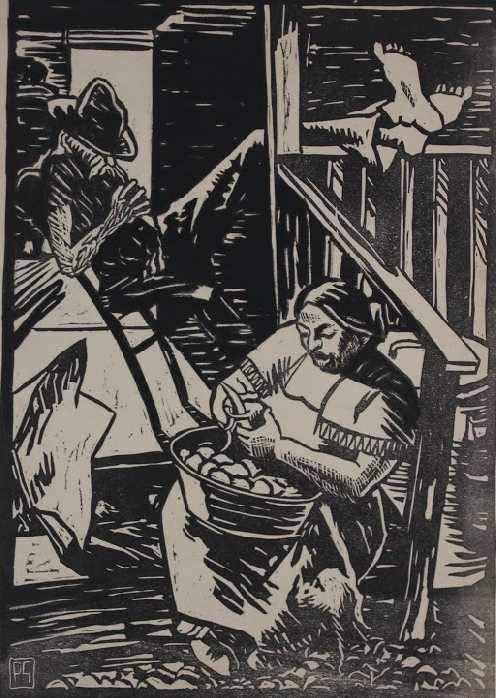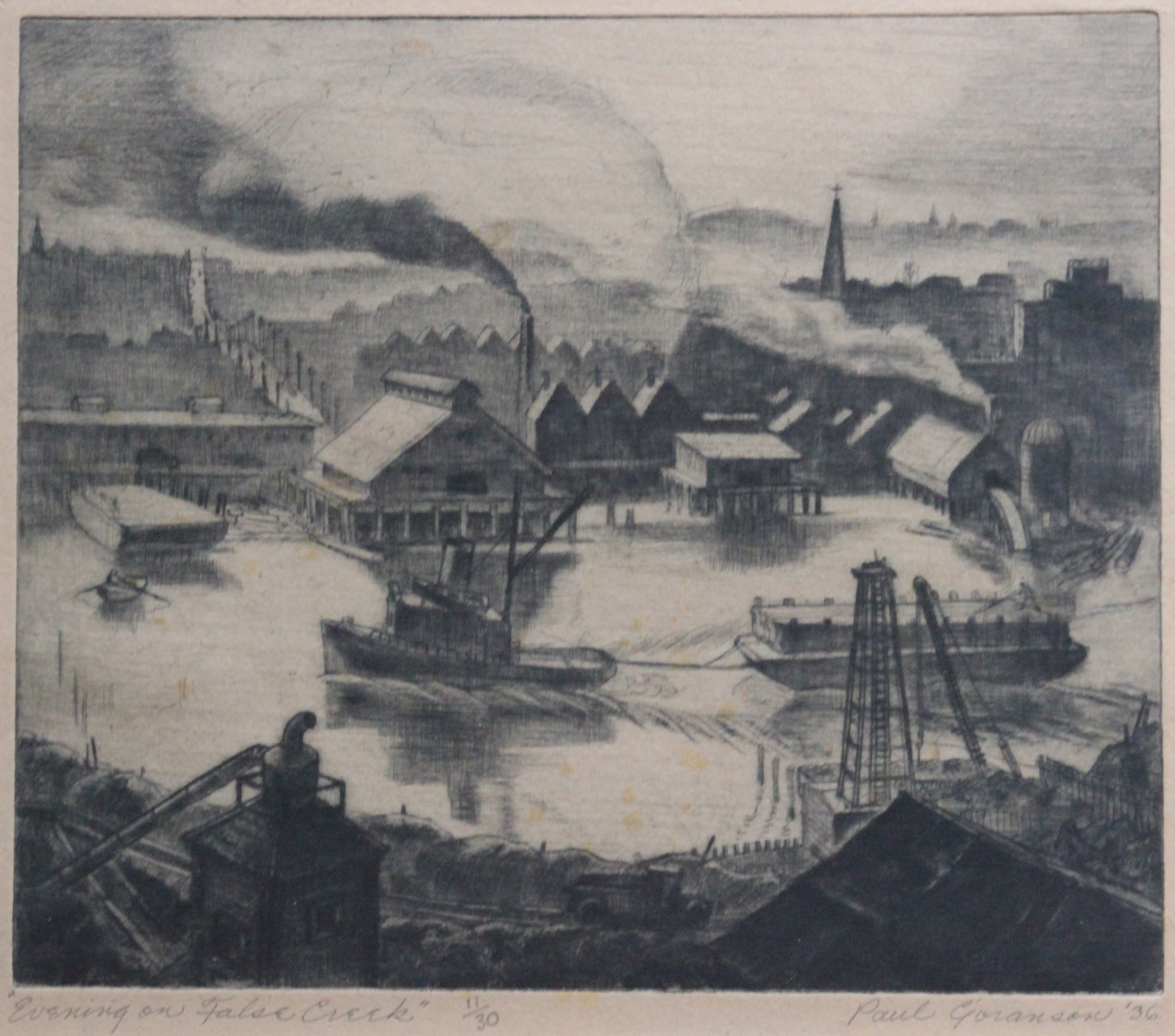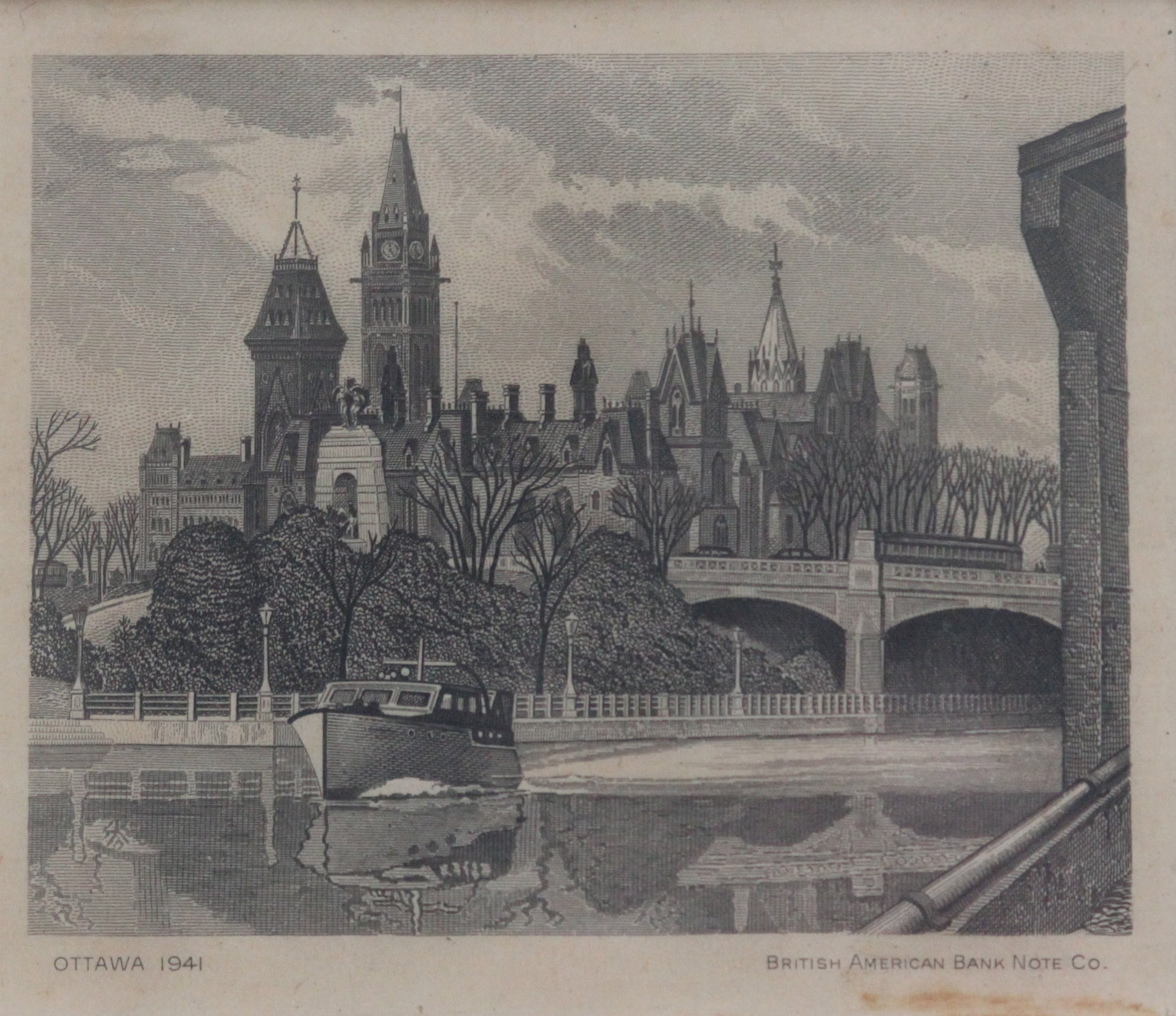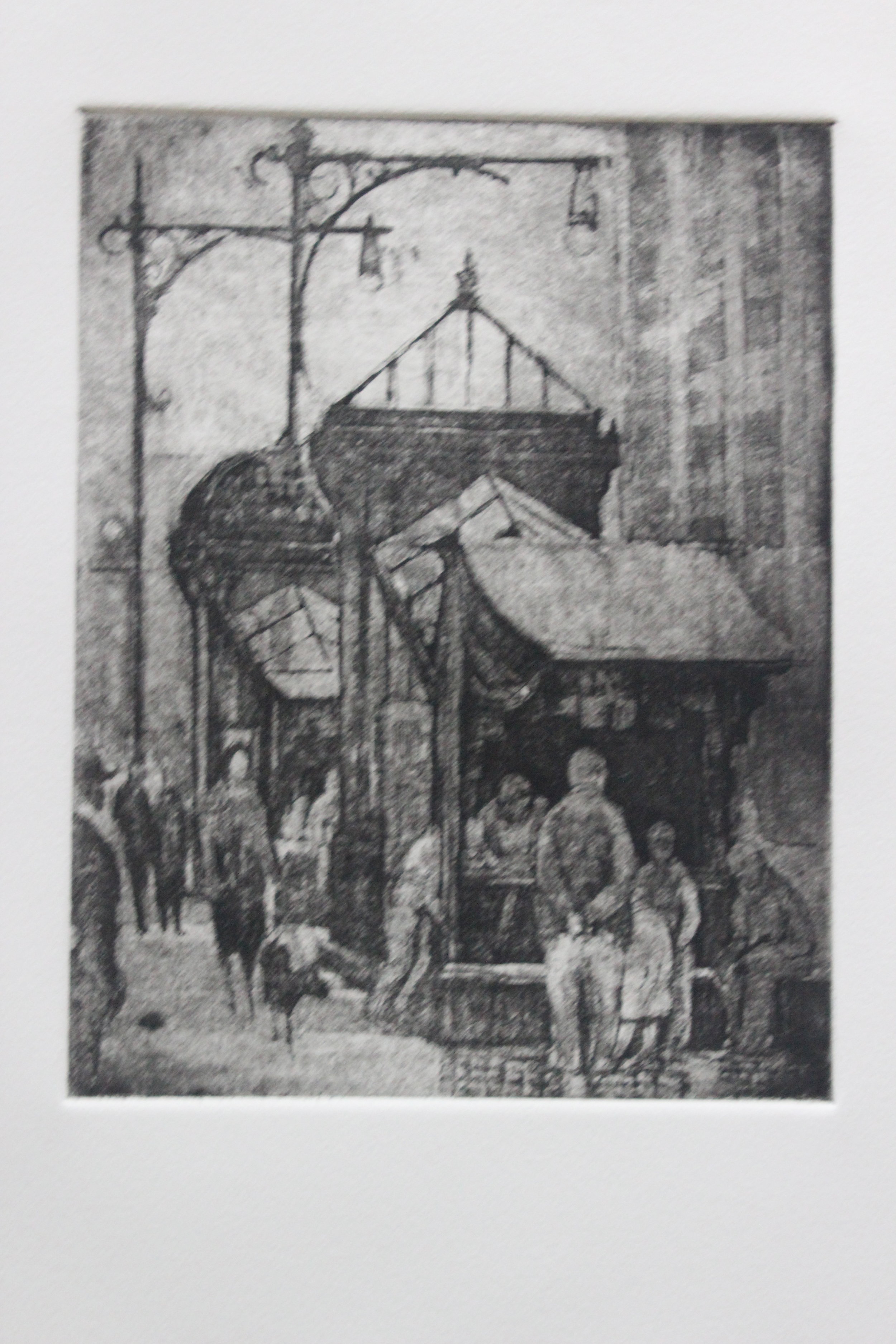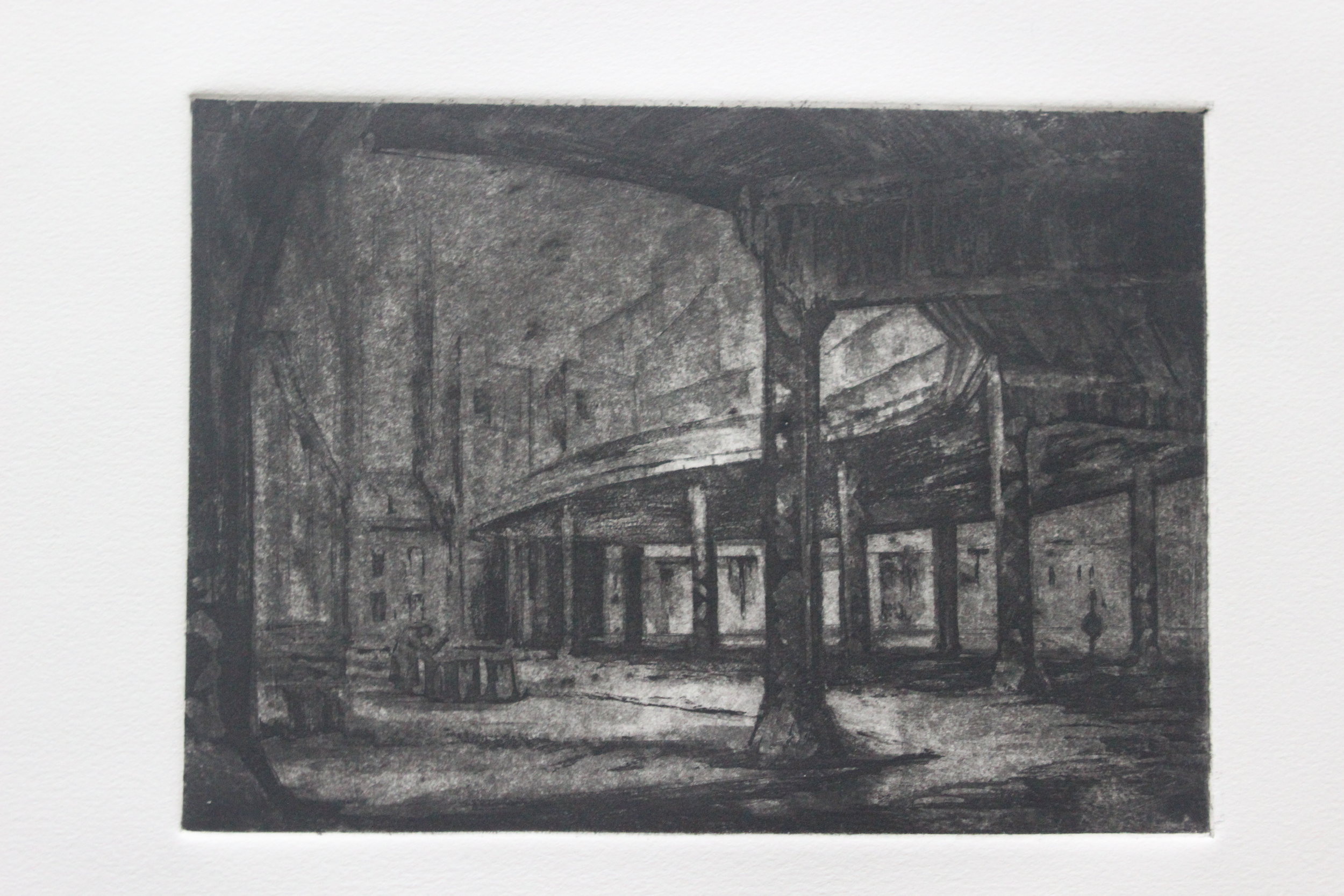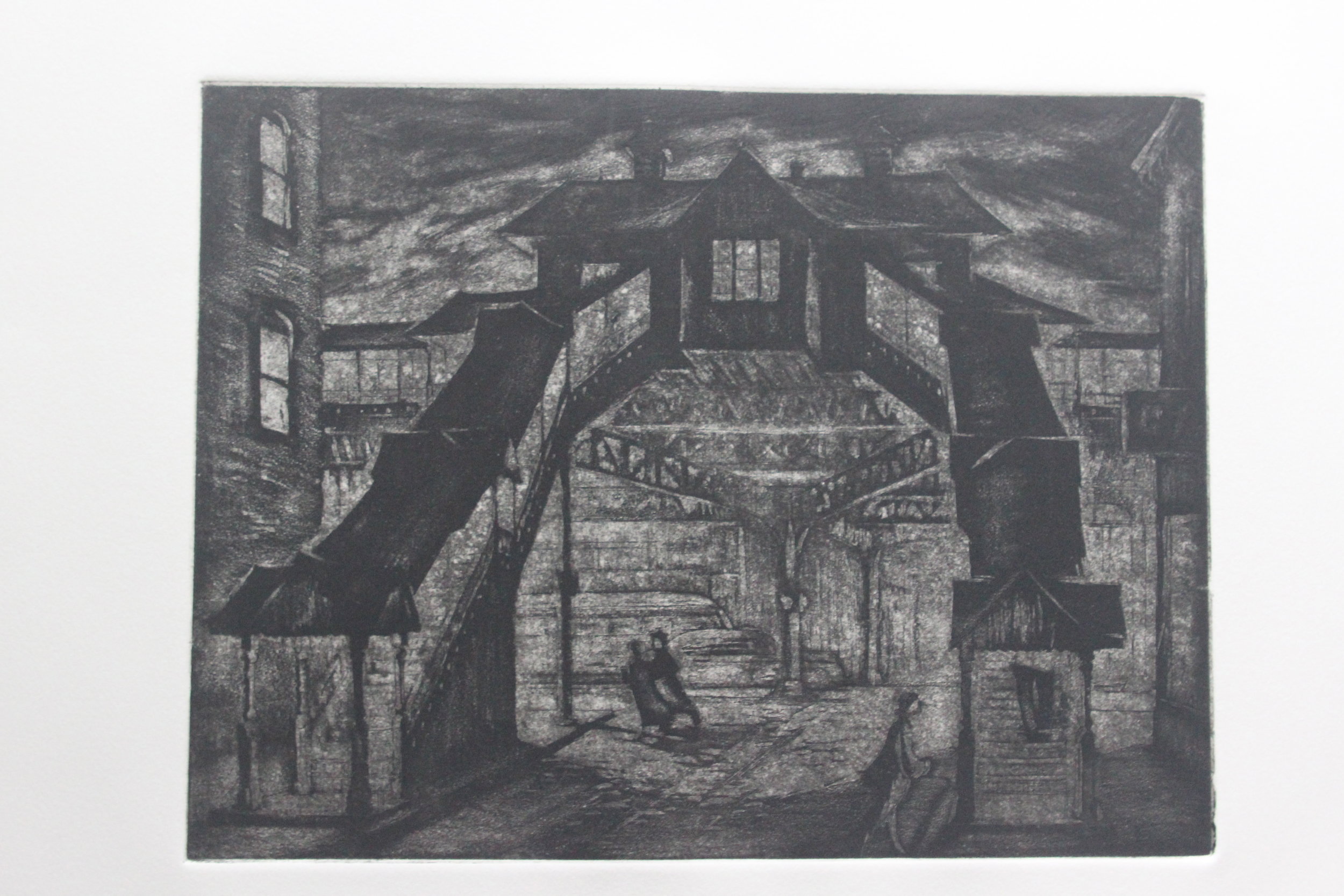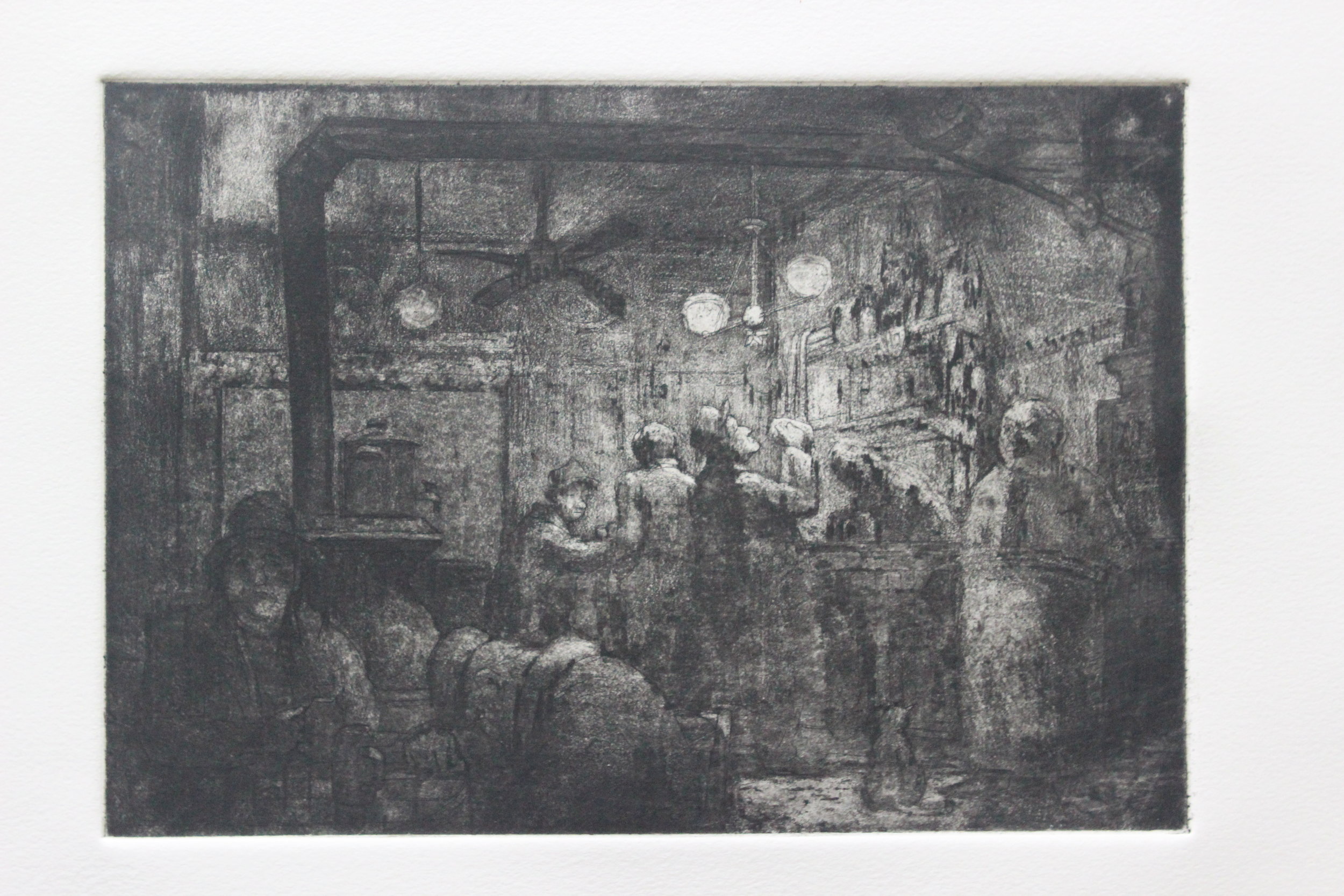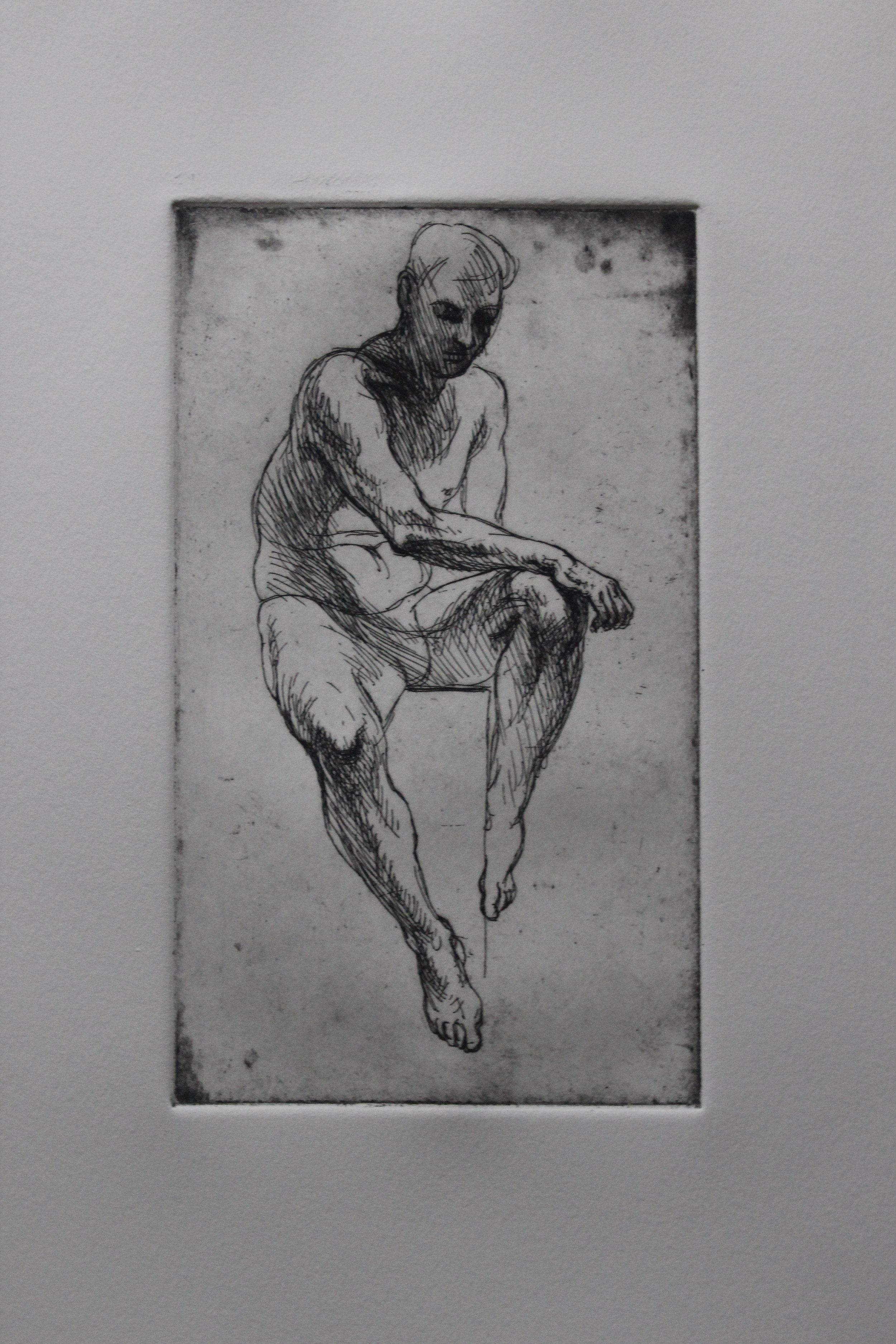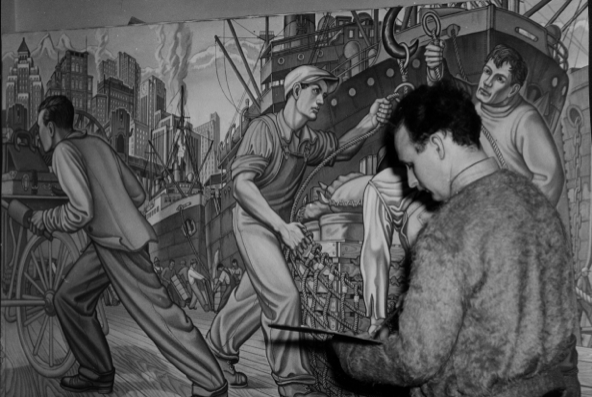Paul Goranson (standing) and Jack Shadbolt.
Photo courtesy of the Vancouver Art Gallery
Paul Goranson, 1911 - 2002
Paul Alexander Goranson was a Canadian war artist with the Royal Canadian Air Force, revered for his highly realistic renderings of war, carried out in the most dangerous and daunting of circumstances.
Goranson was born in Ottawa on 27 April 1911. He trained at the Vancouver School of Art and the British Columbia College of Art, under Fred Varley, a World War I artist and member of the Group of Seven.
After finishing his studies, Goranson hung up his shingle as a freelance commercial artist in Vancouver, while teaching art classes in the evenings. During this time, Goranson began to work with Orville Fisher and E.J. Hughes, the trio called themselves the West Coast Brotherhood. They often went en plein air painting together; the Feckless Collection includes three images of the same boat in dry dock, done by the three artists at slightly different points of view.
The three men began to produce murals for restaurants and churches around Vancouver, however, they gained real recognition when they produced a 12-part mural for the San Francisco World’s Fair in 1939.
The series depicted the industries of British Columbia, the panels are a beautiful example of men at work; miners pound rock with jack hammers, railwaymen pound railroad ties with sledgehammers and sailors hoist nets onto boats. The influence of Diego Rivera’s influence on these panels is unmistakable.
The outbreak of World War II forced the San Francisco Exposition to close early, and all three men enlisted. In 1941, Goranson joined the RCAF as an NCO artist.
Goranson’s pencil sketches were dramatic. He sketched from open boat after being sunk in the North Atlantic; recorded soldiers taking refuge from sniper fire; and showed rescue workers pulling countless bodies from a bomb site. All with beautiful detail and riveting honesty. He continued his theme from the San Francisco murals, illustrating men working with machinery and tools, however he also captured the quieter moments; men shaving, soldiers boarding trains, and men enjoying a midnight snack together.
After the war ended, Goranson stayed on an additional two years with the RCAF in Ottawa, using the time to flesh out some of his pencil sketches into painted canvases.
Unfortunately, Goranson found little work in the Toronto area, so in 1966 he moved to New York where he created a company that provided window displays for large department stores. He found additional work creating scenery and backdrops for New York’s Metropolitan Opera.
Goranson always stayed a Canadian citizen and eventually moved back to Vancouver with his wife, Renee Canas. He continued to paint right up until his death at age at 91.
Selected Collections
The Beaverbrook Collection, Fredricton, PEI
National Gallery of Canada, Ottawa, ON
Vancouver Art Gallery, Vancouver, BC
The Feckless Collection, Vancouver, BC
Paul Goranson working on the Industry Panels for the BC Pavillion at the San Francisco World's Fair in 1939.


